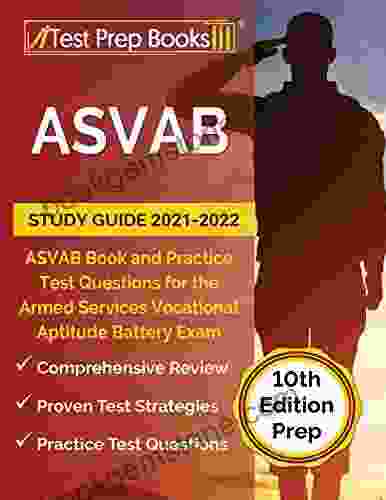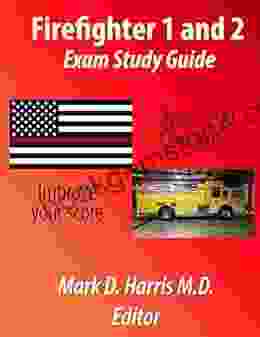A Comprehensive Guide to Self-Assessment for Heavy Commercial Vehicles

5 out of 5
| Language | : | English |
| File size | : | 1095 KB |
| Text-to-Speech | : | Enabled |
| Screen Reader | : | Supported |
| Enhanced typesetting | : | Enabled |
| Word Wise | : | Enabled |
| Print length | : | 17 pages |
Regular maintenance and inspection are crucial for ensuring the safety, efficiency, and longevity of heavy commercial vehicles. Self-assessment is a cost-effective and proactive way for businesses and individuals to stay on top of vehicle maintenance and improve overall fleet health.
This comprehensive guide provides detailed instructions on how to conduct a self-assessment on heavy commercial vehicles, covering everything from pre-inspection preparation to post-inspection reporting. By following the steps outlined in this guide, you can ensure that your vehicles are operating safely and at peak performance.
Pre-Inspection Preparation
Before performing a self-assessment, it is important to make adequate preparations to ensure a thorough and efficient inspection. Here are the key steps involved in pre-inspection preparation:
- Gather necessary tools and equipment: This may include a flashlight, socket wrench, screwdriver, tire gauge, and other specialized tools depending on the type of vehicle.
- Clean the vehicle: Remove any dirt, debris, or grease that could obstruct the inspection.
- Safety first: Wear appropriate safety gear such as gloves, glasses, and sturdy footwear.
- Review vehicle history: If available, refer to maintenance records or previous inspection reports to identify potential areas of concern.
Visual Inspection
The visual inspection is the first step in the self-assessment process. It involves a thorough examination of the vehicle's exterior and interior for any visible signs of damage, wear, or defects.
Exterior Inspection
- Body: Check for dents, scratches, cracks, or corrosion on the cab, chassis, and body panels.
- Windshield and mirrors: Inspect for any chips, cracks, or obstructions in the field of view.
- Lights: Verify that all lights (headlights, taillights, brake lights, etc.) are functioning correctly, including bulbs and lenses.
- Tires: Examine tires for proper inflation, tread wear, cuts, or bulges. Check tire pressure using a gauge.
- Wheels: Look for cracks, bends, or loose bolts on the wheels and axles.
Interior Inspection
- Dashboard: Inspect gauges, warning lights, and controls for any abnormalities.
- Seats and belts: Ensure that seats are secure and belts are in good condition and functioning properly.
- Steering wheel: Check for excessive play or vibration in the steering wheel.
- Brakes: Test the brake pedal for proper response and feel. Check brake fluid levels in the reservoir.
Mechanical Inspection
The mechanical inspection involves a more detailed examination of the vehicle's mechanical components, including the engine, brakes, suspension, and other essential systems.
Engine Inspection
- Oil level and quality: Check the engine oil level and condition using the dipstick.
- Filters: Inspect air and fuel filters for any clogs or damage.
- Belts and hoses: Check for cracks, fraying, or leaks on belts and hoses.
- Battery: Examine the battery for any corrosion or loose terminals.
- Alternator: Test the alternator using a voltmeter to ensure it is charging properly.
Brakes Inspection
- Brake pads and rotors: Check brake pads for wear and tear. Measure rotor thickness and replace if necessary.
- Brake lines: Inspect brake lines for any leaks or damage.
- Brake fluid: Check brake fluid levels and condition.
- ABS system: Test the ABS system to ensure it is functioning properly.
Suspension Inspection
- Springs: Examine suspension springs for any cracks or damage.
- Shock absorbers: Check shock absorbers for any signs of leaks or wear.
- Tie rods and ball joints: Inspect tie rods and ball joints for excessive play or damage.
- Steering system: Test the steering system for any play or resistance.
Post-Inspection Reporting
Once the self-assessment is complete, it is important to document the findings in a detailed report. The report should include the following components:
- Inspection date and vehicle information: Record the date of the inspection and the make, model, and year of the vehicle.
- Inspector information: Provide the name and contact information of the person who conducted the inspection.
- Inspection summary: Briefly summarize the overall condition of the vehicle and highlight any significant findings.
- Detailed findings: List all defects, areas of concern, and any maintenance or repair recommendations.
- Photo documentation: Include photographs of any significant defects or areas that require attention.
- Recommendations: Provide specific recommendations for maintenance, repairs, or further inspections.
Regular self-assessment is a vital component of a comprehensive heavy commercial vehicle maintenance program. By following the steps outlined in this guide, you can effectively identify potential issues, improve vehicle safety, and extend the life of your fleet.
Remember, a well-maintained vehicle not only ensures the safety of your drivers and货物but also reduces operating costs, improves fuel efficiency, and enhances your reputation as a responsible fleet operator.
5 out of 5
| Language | : | English |
| File size | : | 1095 KB |
| Text-to-Speech | : | Enabled |
| Screen Reader | : | Supported |
| Enhanced typesetting | : | Enabled |
| Word Wise | : | Enabled |
| Print length | : | 17 pages |
Do you want to contribute by writing guest posts on this blog?
Please contact us and send us a resume of previous articles that you have written.
 Best Book
Best Book Page Flip
Page Flip Bookshelf
Bookshelf Literary loom
Literary loom Chapter
Chapter Bookish
Bookish PageTurner
PageTurner Bibliophile
Bibliophile Story
Story Inkwell
Inkwell Bookworm
Bookworm Labyrinth
Labyrinth Plot Twist
Plot Twist Prose
Prose Paperback
Paperback Storyteller
Storyteller Sanctuary
Sanctuary Fiction
Fiction Reading
Reading Chronicle
Chronicle Read
Read Moshe Ohayon
Moshe Ohayon Edward R Lachapelle
Edward R Lachapelle Janice K Ledford
Janice K Ledford Ron Siliko
Ron Siliko C F Crist
C F Crist Narasimha Karumanchi
Narasimha Karumanchi Elaine Sciolino
Elaine Sciolino Katrina Lawrence
Katrina Lawrence Marie Cirano
Marie Cirano Cyndi Kinney
Cyndi Kinney Wilfred M Mcclay
Wilfred M Mcclay Gerald Hausman
Gerald Hausman John Morrison
John Morrison Pip Williams
Pip Williams Ray Walker
Ray Walker Educational Testing Service
Educational Testing Service Alan Charlesworth
Alan Charlesworth Fatime Losonci
Fatime Losonci Wendy C Crone
Wendy C Crone Jane Bottomley
Jane Bottomley Wayne J Lutz
Wayne J Lutz Kira Salak
Kira Salak Michelle Lee
Michelle Lee Sigrid Fry Revere
Sigrid Fry Revere Luca Brambilla
Luca Brambilla Lewis Morris
Lewis Morris Rebecca Hill
Rebecca Hill Tiara R Brown
Tiara R Brown Richard Bak
Richard Bak Emily Colin
Emily Colin Smart Reads
Smart Reads William Ma
William Ma Snap Summaries
Snap Summaries William W Johnstone
William W Johnstone Bright Summaries
Bright Summaries Isee Exam Preparation Experts
Isee Exam Preparation Experts Mark Dawson
Mark Dawson Laura Peyton Roberts
Laura Peyton Roberts Bob Mckenzie
Bob Mckenzie Stephen Haddelsey
Stephen Haddelsey Lorelou Desjardins
Lorelou Desjardins John Gilstrap
John Gilstrap Andy Kirkpatrick
Andy Kirkpatrick John Seibert Farnsworth
John Seibert Farnsworth William Shakespeare
William Shakespeare Cosmic Kids Publications
Cosmic Kids Publications Neil Chelton
Neil Chelton Gina Wisker
Gina Wisker Rich Polanco
Rich Polanco Robert B Parker
Robert B Parker Elizabeth Hay
Elizabeth Hay Lance Pototschnik
Lance Pototschnik Paul Murton
Paul Murton Louis L Amour
Louis L Amour Simon Richmond
Simon Richmond Preston George Pysh
Preston George Pysh Sara Wheeler
Sara Wheeler Konstantinos Mylonas
Konstantinos Mylonas Eric Bodnar
Eric Bodnar John W Lundin
John W Lundin Ingrid P Wicken
Ingrid P Wicken Bob Duff
Bob Duff Aminta Arrington
Aminta Arrington Wizer
Wizer Stan Skrabut
Stan Skrabut David Gordon
David Gordon Brian Mcfarlane
Brian Mcfarlane Luisa Gastambide
Luisa Gastambide Rajani Katta
Rajani Katta Rob Pate
Rob Pate Jonny Zucker
Jonny Zucker Julia Quinn
Julia Quinn John Germov
John Germov Philip Donlay
Philip Donlay Helen Dunn Frame
Helen Dunn Frame Fethi Mansouri
Fethi Mansouri Philip Jackson
Philip Jackson Trevanian
Trevanian Ian Tuhovsky
Ian Tuhovsky Nicolas Rodak
Nicolas Rodak Lucy Peet
Lucy Peet J R Klein
J R Klein Sarah Vowell
Sarah Vowell Magnus D Jango
Magnus D Jango Robert Crais
Robert Crais Kazim Ali
Kazim Ali Paul Watson
Paul Watson Julia Ann Clayton
Julia Ann Clayton Russell Streeter
Russell Streeter Matthew Simon
Matthew Simon Manfred Theisen
Manfred Theisen John Merriam
John Merriam Helene Martensson
Helene Martensson April Vahle Hamel
April Vahle Hamel Bruce Boudreau
Bruce Boudreau Jeff Hay
Jeff Hay Cindi Myers
Cindi Myers Monica Sorrenson
Monica Sorrenson Francis J Buckley
Francis J Buckley Mitt Romney
Mitt Romney Maggie Ryan
Maggie Ryan Brooks Fiesinger
Brooks Fiesinger Vince Kotchian
Vince Kotchian Kim Heinbuch
Kim Heinbuch Mauricio Fau
Mauricio Fau Tony Mendoza
Tony Mendoza Ian C Friedman
Ian C Friedman John Hemming
John Hemming Insight Guides
Insight Guides J D Ware
J D Ware Noor De Olinad
Noor De Olinad Tracy Johnston
Tracy Johnston Nigel Cliff
Nigel Cliff Anita Landoll
Anita Landoll Sean Dietrich
Sean Dietrich J R Haseloff
J R Haseloff Joel J Lerner
Joel J Lerner Prepvantage
Prepvantage Seth Abramson
Seth Abramson Stuart Woods
Stuart Woods Bruce Hunt
Bruce Hunt Steven W Dulan
Steven W Dulan Manny Serrato
Manny Serrato Ross Blankenship
Ross Blankenship Mark Lee
Mark Lee Joshua Jelly Schapiro
Joshua Jelly Schapiro Jenny Mackay
Jenny Mackay R Raman
R Raman Rex Nelson
Rex Nelson Manik Sheoran
Manik Sheoran Rebecca E F Barone
Rebecca E F Barone Michele Shriver
Michele Shriver Edulink Gmbh
Edulink Gmbh Mark Mclaughlin
Mark Mclaughlin Joseph Toone
Joseph Toone Fred Ray Lybrand
Fred Ray Lybrand Nick Smith
Nick Smith Lucy Coleman
Lucy Coleman Sterling Test Prep
Sterling Test Prep Morgan Stafford
Morgan Stafford 50minutes Com
50minutes Com Felicie Williams
Felicie Williams Caitlin Doughty
Caitlin Doughty Dr Ray Makar
Dr Ray Makar W E B Griffin
W E B Griffin Michael Corayer
Michael Corayer Lawrence Osborne
Lawrence Osborne Cliff Seruntine
Cliff Seruntine Maria Montessori
Maria Montessori John Howells
John Howells Robert D Kaplan
Robert D Kaplan Nadav Snir
Nadav Snir John Rae
John Rae Peterson S
Peterson S Jon A Archambault
Jon A Archambault Pat Thomson
Pat Thomson Rhonda Leeman Taylor
Rhonda Leeman Taylor Laura Lincoln Maitland
Laura Lincoln Maitland Wickaninnish Inn
Wickaninnish Inn Zigzag English
Zigzag English William Pitts
William Pitts Hugo Banzer Suarez
Hugo Banzer Suarez Russell Maddicks
Russell Maddicks Jay H Lefkowitch
Jay H Lefkowitch Meike Winnemuth
Meike Winnemuth Neha Gupta
Neha Gupta Seyyed Hossein Nasr
Seyyed Hossein Nasr John Walters
John Walters William Wadsworth
William Wadsworth Simon Hart
Simon Hart Ken Griffey Jr
Ken Griffey Jr Narendra Kumar V
Narendra Kumar V Markes E Johnson
Markes E Johnson Quick Reads
Quick Reads Kaye Edwards
Kaye Edwards Nick Adams
Nick Adams T A Williams
T A Williams Carlos A Caggiani
Carlos A Caggiani Doug Gaskill
Doug Gaskill Jean Vives
Jean Vives Kevin Marx
Kevin Marx Janet Chapple
Janet Chapple Lloyd Richardson
Lloyd Richardson Ana Sortun
Ana Sortun Paul Ames
Paul Ames Rod Kulbach
Rod Kulbach Jeanie Buss
Jeanie Buss Tim Brown
Tim Brown Melody Carlson
Melody Carlson Edward Hoagland
Edward Hoagland Karsten Heuer
Karsten Heuer Dixie Dansercoer
Dixie Dansercoer Lally Brown
Lally Brown Rico Austin
Rico Austin John Keahey
John Keahey Christophe P Yerling Ph D
Christophe P Yerling Ph D Lesley Jane Eales Reynolds
Lesley Jane Eales Reynolds Matt Racine
Matt Racine Sandra Dallas
Sandra Dallas One Edition Kindle Edition
One Edition Kindle Edition Zip Reads
Zip Reads Nikki Nichols
Nikki Nichols Eugene C Toy
Eugene C Toy Jackson Carter
Jackson Carter Pamela K Lamb
Pamela K Lamb Tim Notier
Tim Notier Christopher D Nolan
Christopher D Nolan Nisha Garg
Nisha Garg Steven Cowie
Steven Cowie Deanna Raybourn
Deanna Raybourn Douglas J Gould
Douglas J Gould Kate Williams
Kate Williams Mark Zegarelli
Mark Zegarelli J Maarten Troost
J Maarten Troost Stephen John
Stephen John Joe Pelletier
Joe Pelletier Rory Stewart
Rory Stewart Sharon A Wynne
Sharon A Wynne Marie Benedict
Marie Benedict Alex Hibbert
Alex Hibbert Laura Lee Smith
Laura Lee Smith Horace C A
Horace C A Robert Collins
Robert Collins John Murray
John Murray Joshua Armstrong
Joshua Armstrong Eric Engle
Eric Engle Justin Goldman
Justin Goldman Kenneth Oppel
Kenneth Oppel Nicholas Gallo
Nicholas Gallo Greg Breining
Greg Breining Raquel Baccetto
Raquel Baccetto Hilde Hoogenboom
Hilde Hoogenboom George Orwell
George Orwell Stephen Ausherman
Stephen Ausherman Kanchan Suyash
Kanchan Suyash Tim Hannigan
Tim Hannigan Amy Wilentz
Amy Wilentz Maria Spantidi
Maria Spantidi Dr John Hockey
Dr John Hockey Peter Mansfield
Peter Mansfield Tony Horwitz
Tony Horwitz Martin Woodward
Martin Woodward Robert N Rosen
Robert N Rosen Mike Chambers
Mike Chambers Len Airey
Len Airey Viki Winterton
Viki Winterton Shanta Kumar
Shanta Kumar Wayne Johnston
Wayne Johnston David J Rothman
David J Rothman Meghan Mccarthy
Meghan Mccarthy Fridtjof Nansen
Fridtjof Nansen Smart Edition
Smart Edition Mary Ann Hogan
Mary Ann Hogan Tessa Dare
Tessa Dare Savage Greenboro
Savage Greenboro Benjamin P Bowser
Benjamin P Bowser Andrew Hempstead
Andrew Hempstead Brien Foerster
Brien Foerster Terry Frei
Terry Frei Jason Hogan
Jason Hogan Mark Rosenman
Mark Rosenman Gavin Francis
Gavin Francis Mariah Laine Moyle
Mariah Laine Moyle Simon Turney
Simon Turney Anuj Tikku
Anuj Tikku Helen Wenley
Helen Wenley Bookrags Com
Bookrags Com Proprietary Edition Kindle Edition
Proprietary Edition Kindle Edition Xavier Marie Bonnot
Xavier Marie Bonnot Dr Hooelz
Dr Hooelz Michael Powell
Michael Powell Roy Fisher
Roy Fisher Randy Wayne White
Randy Wayne White G Neri
G Neri Erin Trahan
Erin Trahan Topher Donahue
Topher Donahue Balazs Csigi
Balazs Csigi Edwyn Forest
Edwyn Forest Redhen Family
Redhen Family Elena Leman
Elena Leman John Scherber
John Scherber Rick Steves
Rick Steves Various
Various W M Raebeck
W M Raebeck Nicholas Crowder
Nicholas Crowder Eric Newman
Eric Newman Julian Stern
Julian Stern Gregg Hurwitz
Gregg Hurwitz Lynda Field
Lynda Field Joseph Robertia
Joseph Robertia Keri Bloomfield
Keri Bloomfield Jeremy K Davis
Jeremy K Davis Sigurd F Olson
Sigurd F Olson Greg Gilhooly
Greg Gilhooly Bob Shepton
Bob Shepton Megan Poore
Megan Poore Darren Alff
Darren Alff Ted Kulfan
Ted Kulfan Wolfgang Daunicht
Wolfgang Daunicht Janet Evans
Janet Evans Jim Mancuso
Jim Mancuso C E Flores
C E Flores Kathleen Kirkland
Kathleen Kirkland Caryn Boddie
Caryn Boddie Khaled Hosseini
Khaled Hosseini Jason Dean
Jason Dean Sophie Fuggle
Sophie Fuggle Margaret K Nydell
Margaret K Nydell Jamie Jensen
Jamie Jensen Angela Stevens
Angela Stevens Skip Hollandsworth
Skip Hollandsworth Kim Heldman
Kim Heldman Richard Kadrey
Richard Kadrey Genius Reads
Genius Reads Ben Tall
Ben Tall Dan Fullerton
Dan Fullerton Emt Basic Exam Prep Team
Emt Basic Exam Prep Team Tania N Shah
Tania N Shah Osasumwen Asoro
Osasumwen Asoro Robert Cargill
Robert Cargill Disha Experts
Disha Experts Jared Derksen
Jared Derksen Rusty Young
Rusty Young Supersummary
Supersummary Michel Roy
Michel Roy Stephan Orth
Stephan Orth Lucille Recht Penner
Lucille Recht Penner Laura Albritton
Laura Albritton S K Gupta
S K Gupta Julia Alvarez
Julia Alvarez Vincent Chidindu Asogwa
Vincent Chidindu Asogwa Language Guru
Language Guru Nielson Phu
Nielson Phu Grace Barrington Shaw
Grace Barrington Shaw Georgios Papadakis
Georgios Papadakis Steve Schwartz
Steve Schwartz Ged Wilmot
Ged Wilmot Jay Kirk
Jay Kirk Lingo Mastery
Lingo Mastery L Waxy Gregoire
L Waxy Gregoire Evie Litton
Evie Litton Garry Burnett
Garry Burnett Kindle Edition
Kindle Edition Thomas E Johnson
Thomas E Johnson Sylvain Tesson
Sylvain Tesson Gil Martin
Gil Martin Michael Renshaw
Michael Renshaw Rochelle Knight
Rochelle Knight Kathleen Norris
Kathleen Norris Print Replica Kindle Edition
Print Replica Kindle Edition Tim Bauerschmidt
Tim Bauerschmidt Dr Jyuthica Laghate
Dr Jyuthica Laghate Ilona Andrews
Ilona Andrews Jack Slater
Jack Slater Patricia Briggs
Patricia Briggs Rupika Raj
Rupika Raj Jocelyn Jane Cox
Jocelyn Jane Cox Stanley Vast
Stanley Vast Katherine Nouri Hughes
Katherine Nouri Hughes Jane Moore
Jane Moore Dk
Dk General
General Warwick Trucker
Warwick Trucker Um A Yube
Um A Yube Brandon Royal
Brandon Royal Mark Greaney
Mark Greaney Kayla Chalko
Kayla Chalko Patrick O Sullivan
Patrick O Sullivan Andy Russell
Andy Russell L T Ryan
L T Ryan Paul Johnson
Paul Johnson Ben Malisow
Ben Malisow John Hiker
John Hiker Leslie Davenport
Leslie Davenport Tim Dowley
Tim Dowley Ross Bonander
Ross Bonander Terry Pratchett
Terry Pratchett Christine Wilcox
Christine Wilcox Ashley Schmitt
Ashley Schmitt Lonely Planet
Lonely Planet Laura Ben David
Laura Ben David Steve Warner
Steve Warner Fodor S Travel Guides
Fodor S Travel Guides Kristine Ellingson
Kristine Ellingson James Cave
James Cave Nicholas Bjorn
Nicholas Bjorn Robert Finch
Robert Finch Businessnews Publishing
Businessnews Publishing Chic Scott
Chic Scott Jesse M Ehrenfeld
Jesse M Ehrenfeld Nicholas J Cotsonika
Nicholas J Cotsonika Nachole Johnson
Nachole Johnson Hicham And Mohamed Ibnalkadi
Hicham And Mohamed Ibnalkadi Pauline Harmange
Pauline Harmange Juliet Grames
Juliet Grames Prasad Raju V V N R Pathapati
Prasad Raju V V N R Pathapati Tao Le
Tao Le Kevin Biggar
Kevin Biggar Kristin Hannah
Kristin Hannah Fiona Gibson
Fiona Gibson Triumphant Test Prep
Triumphant Test Prep Lisa Kleypas
Lisa Kleypas Saroo Brierley
Saroo Brierley James Cowan
James Cowan Andrew Hudgins
Andrew Hudgins Jen Beck Seymour
Jen Beck Seymour Emily Kimelman
Emily Kimelman Michelle Larkin
Michelle Larkin Huma Filo
Huma Filo Luca Vargiu
Luca Vargiu Kaplan Test Prep
Kaplan Test Prep Khalid Khashoggi
Khalid Khashoggi Carla Mooney
Carla Mooney Bob Smale
Bob Smale David Archer
David Archer Joseph Phillips
Joseph Phillips Rachel Russ
Rachel Russ Grady Hendrix
Grady Hendrix Tony Daffern
Tony Daffern Michele G Kunz
Michele G Kunz Hugh Sinclair
Hugh Sinclair Richard Henry Dana
Richard Henry Dana Douglas Preston
Douglas Preston Dr Lew Deitch
Dr Lew Deitch Alexis Lipsitz Flippin
Alexis Lipsitz Flippin Lonely Planet Kids
Lonely Planet Kids Harley Wylde
Harley Wylde Con Coughlin
Con Coughlin Ken Chaddock
Ken Chaddock Shay Spivey
Shay Spivey Rosita Forbes
Rosita Forbes Anna Curran
Anna Curran Boye Lafayette De Mente
Boye Lafayette De Mente Sport Hour
Sport Hour Colson Whitehead
Colson Whitehead Michael Vlessides
Michael Vlessides Susan Weese
Susan Weese Miles Martin
Miles Martin John Henderson
John Henderson Helene St James
Helene St James A R Vasishtha
A R Vasishtha Trivium Test Prep
Trivium Test Prep Ibl Press
Ibl Press Ted Chiang
Ted Chiang Kerry Karram
Kerry Karram Jeffrey Alford
Jeffrey Alford Approach Guides
Approach Guides Scott Butler
Scott Butler Mike Kraus
Mike Kraus Lawrence Durrell
Lawrence Durrell Frosty Wooldridge
Frosty Wooldridge Illustrated Edition Kindle Edition
Illustrated Edition Kindle Edition Hannah Tyson
Hannah Tyson Kristopher Martel
Kristopher Martel Nick Angelis
Nick Angelis Alina Adams
Alina Adams Kevin Shea
Kevin Shea Zanna Sloniowska
Zanna Sloniowska Garry J Shaw
Garry J Shaw Baby Professor
Baby Professor Joeanna Rebello Fernandes
Joeanna Rebello Fernandes Leo Books
Leo Books United States Government Us Army
United States Government Us Army Richard Palmer
Richard Palmer Edna Fernandes
Edna Fernandes Jearl Walker
Jearl Walker Yaa Gyasi
Yaa Gyasi
Light bulbAdvertise smarter! Our strategic ad space ensures maximum exposure. Reserve your spot today!
 Ed CooperFollow ·10k
Ed CooperFollow ·10k Dale MitchellFollow ·7k
Dale MitchellFollow ·7k Leo TolstoyFollow ·16.5k
Leo TolstoyFollow ·16.5k Nathan ReedFollow ·10.4k
Nathan ReedFollow ·10.4k Chad PriceFollow ·14.2k
Chad PriceFollow ·14.2k Vic ParkerFollow ·4.7k
Vic ParkerFollow ·4.7k Dave SimmonsFollow ·3.2k
Dave SimmonsFollow ·3.2k Ray BlairFollow ·10k
Ray BlairFollow ·10k

 Scott Parker
Scott ParkerGerman Men Sit Down To Pee And Other Insights Into German...
German culture is...

 Tyler Nelson
Tyler NelsonHigh School: A Comprehensive Guide to Surviving the...
High school can...

 Dan Bell
Dan BellUnlocking Success in Military Careers: A Comprehensive...
Embarking on a military career is a...

 Leslie Carter
Leslie CarterAn American Soldier's Lifelong Journey with Racism: From...
In the annals of...

 Aldous Huxley
Aldous HuxleyFirefighters: Guardians of Our Communities and Exam Study...
Firefighters, the valiant sentinels of...

 Jason Reed
Jason ReedAn Unforgettable Literary Journey: Exploring...
: A Trip Down History's Darkest...
5 out of 5
| Language | : | English |
| File size | : | 1095 KB |
| Text-to-Speech | : | Enabled |
| Screen Reader | : | Supported |
| Enhanced typesetting | : | Enabled |
| Word Wise | : | Enabled |
| Print length | : | 17 pages |












